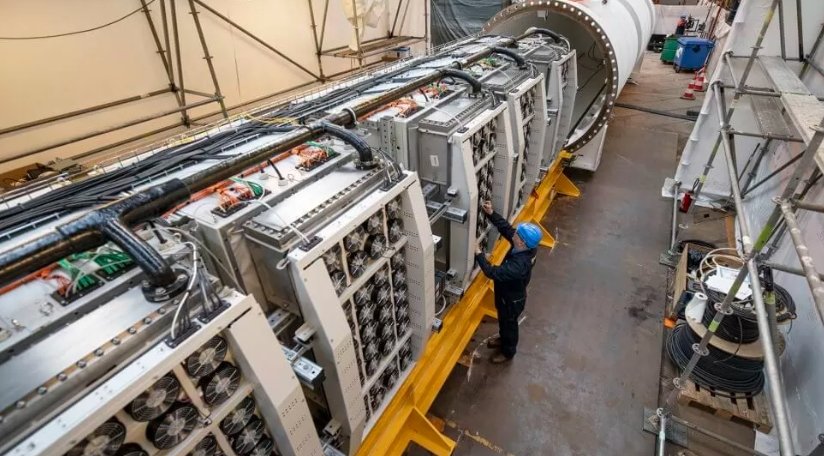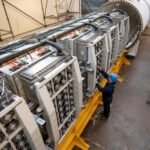Scotland stands on the brink of a tech revolution as investors pour billions into data centers powered by its vast renewable energy supplies. This surge, highlighted in fresh reports from planning experts, promises to turn regions like Fife and the Highlands into global hotspots for sustainable digital infrastructure amid the AI boom.
Renewables Drive Scotland’s Data Center Appeal
Scotland’s edge in the data center world comes from its green energy riches. The country produced more than 120 percent of its electricity needs from renewables in 2024, thanks to booming wind and hydro projects. This surplus makes it a prime spot for energy-hungry facilities that need clean power to cut costs and carbon footprints.
Experts point out that the cool climate here slashes cooling needs, which can eat up huge amounts of energy elsewhere. Land is plentiful too, with vast areas in the north and east ready for development without the tight squeezes seen in southern England. A skilled workforce from the oil and gas shift adds another layer, bringing engineering knowhow to build and run these high-tech sites.
This mix has drawn eyes from big players worldwide. Operators want spots that blend low costs with eco-friendly ops, and Scotland checks those boxes firmly. Recent grid upgrades, like the 20 billion pound push by electricity networks, ensure power flows smoothly to new builds.

Major Projects Spotlight Investment Surge
Fresh plans show the pace picking up fast. One standout is the 15 billion pound Stoics network, a trio of massive green data centers linking Fife, East Ayrshire, and North Lanarkshire. Named after ancient thinkers like Cato and Aurelius, these hyperscale hubs aim to rival the biggest clusters on earth while running on net zero energy.
In North Lanarkshire, the old Ravenscraig steelworks site gets a 3.9 billion pound makeover into an AI-ready powerhouse. This project alone eyes 2,000 steady jobs and pumps 1.2 billion pounds into construction, lifting Scotland’s GDP by about 0.4 percent once it hums along.
Further north, Argyll kicks off the UK’s first renewable powered sovereign AI cloud with partner SambaNova. Set to spark 15 billion pounds in total spend, it creates over 2,000 building jobs yearly and 1,200 permanent roles, focusing on data independence without overseas cloud giants.
Edinburgh sees proposals for more centers too, while Glenrothes boasts the nation’s first fully renewable setup with a power use efficiency under 1.15. These efforts tie into broader trends, like battery storage giants in Lanarkshire that store wind power for steady supply.
| Project Name | Location | Investment (GBP) | Expected Jobs | Key Features |
|---|---|---|---|---|
| The Stoics Network | Fife, East Ayrshire, North Lanarkshire | 15 billion | 1,200 permanent + 2,000 construction | Hyperscale, net zero, AI-focused |
| Ravenscraig Regeneration | North Lanarkshire | 3.9 billion | 2,000 long-term | AI-ready, GDP boost of 0.4% |
| Argyll AI Cloud | Argyll | 15 billion total | 1,200 permanent | Sovereign, renewable powered |
| Glenrothes Facility | Fife | Not specified | Hundreds in ops | PUE <1.15, fully green |
Economic Gains and Community Impacts
The payoff for Scotland looks huge. The UK’s data center sector already adds 4.7 billion pounds a year to the economy, with forecasts hitting 44 billion pounds by 2035 from builds and runs. Scotland could snag a big slice, fueling growth in tech startups via programs like Techscaler.
Jobs top the list of wins. From construction crews to tech specialists, thousands of roles open up, especially in areas hit hard by past industry dips. This shift builds a “green digital economy,” linking data ops with renewable expansions and even heat reuse from centers for local warmth.
Communities stand to gain too, with projects promising local spending and training. Yet, voices online raise flags about water use, as AI centers guzzle millions of liters yearly. Balancing this with green creds keeps the buzz positive, showing Scotland’s push for smart, shared progress.
- Abundant wind farms provide cheap, clean power, cutting bills by up to 85 percent versus fossil fuels.
- Cooler temps reduce cooling energy by 30 to 40 percent compared to warmer spots.
- Skilled locals from energy sectors ease hiring, with reskilling programs boosting employability.
- Zonal pricing ideas could make electricity here Europe’s cheapest, drawing more firms north.
Hurdles in Planning and Grid Access
Not everything runs smooth. Southern England holds most big projects due to better grid links and faster approvals. In Scotland, developers wait on policy clarity and transmission tweaks, which can drag timelines.
Water concerns pop up too, with some centers using enough to fill 27 million bottles a year for cooling. Reddit chats highlight fears of strain on local supplies, pushing calls for efficient tech like air cooling. Grid bottlenecks mean even with surplus renewables, power sometimes ships south instead of staying local.
Policy tweaks could fix this. Reports urge zoning land for data use in development plans and streamlining consents via masterplan areas. Early talks between builders, planners, and energy firms speed things up, building trust and cutting risks.
Path to a Sustainable Tech Leader
Looking ahead, Scotland eyes a spot as Europe’s green data king. With 3 gigawatts of projects in play, investments could top 5.7 billion pounds over 20 years, sparking 217 million pounds yearly in benefits. Tying data growth to offshore wind and batteries creates a virtuous cycle for net zero by 2045.
This boom links to wider shifts, like the 2.1 billion pound cable from Peterhead to Yorkshire carrying Scottish wind south for millions of homes. It shows how renewables here power not just data, but national goals. By nailing coordination, Scotland turns potential into real wins for jobs, tech, and the planet.
What do you think of Scotland’s data center rise? Share your views in the comments below and spread the word on social media to keep the conversation going.

















